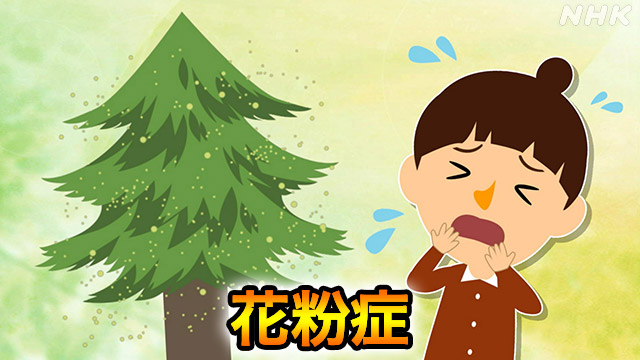It is time for the temperature to rise and a lot of pollen to scatter.
What is worrisome is how to deal with pollinosis, which has similar symptoms to the new coronavirus.
A specialist doctor says, "Take early measures such as taking medicine and wearing goggles, and if you have a high fever or strong malaise, suspect a corona infection and consult your doctor."
At the otolaryngology clinic in Shinagawa-ku, Tokyo, many people who suffer from pollinosis visit from January to May every year.
According to Dr. Hitoshi Nagakura, the symptoms of hay fever are difficult to distinguish because they have some similarities to those when infected with the new coronavirus, such as low-grade fever and sneezing.
In order to prevent the risk of infection with the new coronavirus, this clinic has introduced a new system that allows you to report your symptoms online before going to the clinic.
If you have a symptom of suspected infection, such as a high fever, coughing or malaise, you will be alerted.
They call for more details and recommend PCR tests.
Dr. Nagakura said, "Hay fever and the new coronavirus have similar symptoms, but you need to be especially careful if you have a persistent high fever, or your runny nose is sticky or colored. I would like you to suspect Corona and contact your doctor or counseling center instead of making an easy decision on your own. "
Dr. Nagakura also points out that the risk of infection with the new coronavirus increases as the symptoms of pollinosis worsen.
Touching the face to blow the nose or rubbing the eyes with itching increases the risk of viruses adhering to the hands entering the body.
Dr. Nagakura says, "It is important to take early treatments and measures such as taking medicine and wearing goggles to control the symptoms."

